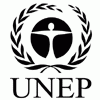Resource information
Land restoration has tremendous potential to help the world limit climate change and achieve its aims for sustainable development. In its latest study, the International Resource Panel finds positive spin-offs to support all 17 Sustainable Development Goals agreed to by the world’s nations as part of the 2030 Agenda for Sustainable Development. While other reports have focused on a subset of the SDGs, this report has intentionally considered all of them, and has done so by inviting a large number of diverse authors to participate in the process. Their observations and conclusions, while by no means comprehensive, paint a picture of opportunity and hope as investments in land restoration rapidly grow across the globe. A summary of their conclusions is that land restoration has co-benefits for all SDGs, indirectly, directly, or both. At the same time, the authors collectively acknowledge that the challenges of restoring land, and of realizing SDG co-benefits, are significant, as evidenced by the variable success of past initiatives. The International Resource Panel’s GRO report provides a unique framework for focusing both local and global investments in the SDGs on those activities that promote “improved resource productivity and a relative decoupling of well-being [e.g. SDGs 1-7] from resource use”. The “Sustainability Scenario” (IRP 2019), used by the GROreport to support its conclusion that decoupling is possible, is based in part on assumptions about global shifts in population growth and consumption patterns. But it also relies on the potential for significant increases in resourceuse efficiency (see https://www.resourcepanel.org/ glossary for definitions of “decoupling” and related terms).Matters relating to land are complex and varied, and can be viewed from an array of perspectives including: political, social, economic, productivity, legal, historical, identity, religious and spiritual. These perspectives relate to power, conquest, colonialism, alienation and patriarchy, and include ownership and communal systems, extraction and other user rights and stewardship. Some of the most influential writers, artists and philosophers have written about land over the millennia. As we approach the final decade before the Sustainable Development Goals (SDG) are to be achieved in 2030 a huge step-up is required on all fronts if the world is to achieve its targets and reverse the climate and species crises. Currently, about a quarter of the world’s land is degraded. Land restoration and rehabilitation together represent one of three primary strategies for achieving SDG 15 (Life on Land), and particularly for meeting the land degradation neutrality target under that goal (15.3). This International Resource Panel think piece highlights that both the process of land restoration and rehabilitation, and the restored land, have tremendous potential to help the world limit climate change and achieve its aims for sustainable development. The think piece provides diverse reflections for policymakers, academics and practitioners for the development of strategies to maximize the co-benefits of land restoration and rehabilitation for life on land by highlighting the risks, trade-offs and costs of land restoration and rehabilitation for the achievement of the 2030 Agenda for Sustainable Development and its associated goals. It strongly recommends a systemic analysis, before investment is made, to avoid unintended consequences. The think piece provides a clear strategy to maximize cross-cutting opportunities for land restoration or rehabilitation across multiple SDGs. The observations and conclusions provided by the 37 authors, while by no means exhaustive, provide hope and aspirations for investments in land restoration and rehabilitation across the globe. ABOUT: An IRP think piece is a technical or policy paper based on IRP scientific studies and assessments and other relevant literature. It is not a full study and assessment but a collection of science-based reflections, which may catalyze the generation of new scientific knowledge and highlight critical topics to be considered in policy discourse.



